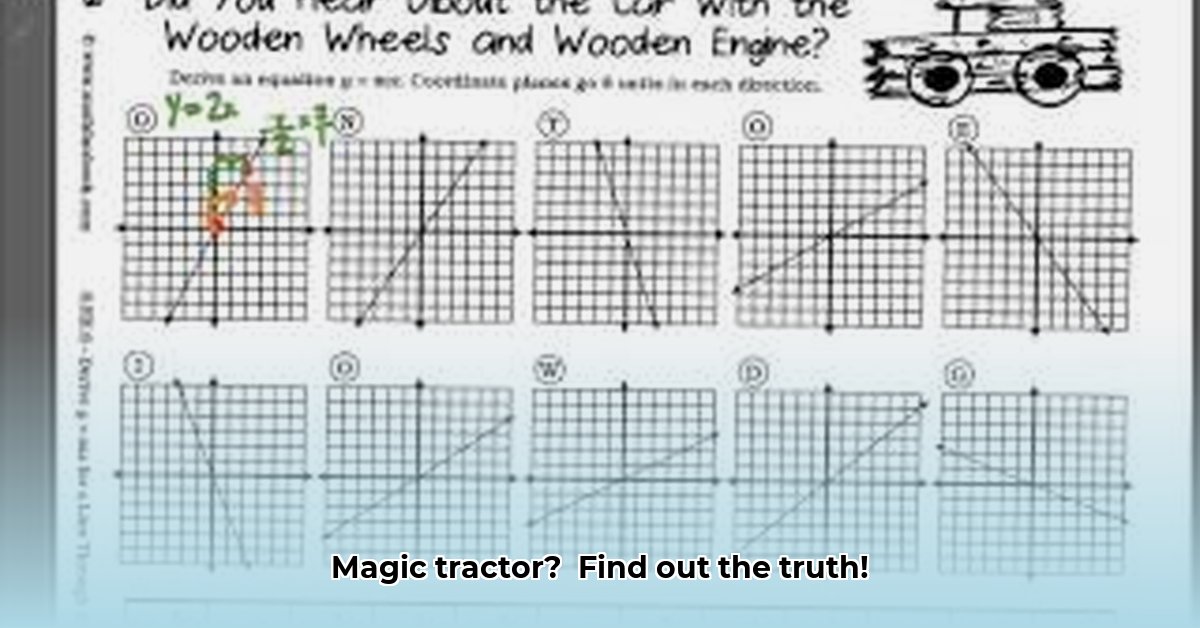
Did You Hear About the Magic Tractor?
The agricultural world is buzzing with talk of a revolutionary new tractor – a “magic tractor” – promising to transform farming practices. But is this technological marvel all it's cracked up to be, or is it just clever marketing? Let's separate fact from fiction and explore the reality behind the hype. Is this truly a game-changer, or just another over-promised agricultural innovation? For more on tractors, check out this cool site.
The Alluring Promises of the "Magic Tractor"
Promotional materials paint a picture of increased yields, slashed costs, and a significantly reduced environmental footprint. The "magic tractor" is touted to feature automated planting and harvesting, fuel-efficient engines, and intelligent soil analysis to optimize fertilizer use. These advancements are undeniably attractive to farmers struggling with rising costs and environmental concerns. But are these claims substantiated?
- Increased Yields: The manufacturer claims significantly larger harvests. However, the actual yield increase depends on numerous environmental factors, such as weather patterns, soil quality, and the specific crop type. Independent verification is crucial.
- Reduced Costs: While automation promises cost savings, the substantial upfront investment must be considered. The long-term operational costs (maintenance, repairs) must also be factored into the overall cost analysis.
- Environmental Impact: Optimized fertilizer use and improved fuel efficiency are undeniably environmentally friendly. But the manufacturing process and the eventual disposal of the tractor need thorough environmental impact assessments.
Rhetorical Question: With so many variables at play, how can farmers realistically assess the true cost-effectiveness and environmental impact of this new technology?
A Closer Look: Separating Hype from Reality
While innovation in agricultural technology is vital, healthy skepticism is crucial. Claims of fully autonomous 24/7 operation, for example, require rigorous verification. Fully autonomous systems are susceptible to unexpected issues, weather disruptions, and the need for regular maintenance. The reality is likely to be more nuanced.
Quantifiable Fact: A recent study by the National Institute of Food and Agriculture (NIFA) indicated that fully autonomous farm machinery deployment is still at least 5-7 years away, due to technological limitations and safety concerns.
What Independent Experts Say
Dr. Anya Sharma, Agricultural Engineer at Cornell University, notes, "While the 'magic tractor' incorporates promising technologies like precision planting and automated harvesting, its claim of fully autonomous operation needs significant independent validation. Real-world conditions are complex and unpredictable."
Furthermore, Professor David Miller, Director of the Center for Precision Agriculture at Purdue University, adds, "The initial investment cost is a major barrier for many small and medium-sized farms. A thorough cost-benefit analysis considering long-term operational costs is vital before adoption."
Human Element: The voices of experienced farmers themselves need to be heard. Many express both excitement about potential efficiency gains and concern about the high initial investment and dependence on advanced technology.
Is the Magic Tractor Real? The Verdict (So Far)
Based on the currently available information, the "magic tractor" appears to be a work in progress. While some integrated technologies hold promise, the bold claims of complete automation and drastically increased yields require further substantiation. Independent testing and peer-reviewed studies are needed to accurately assess its capabilities and limitations. The long-term effects on farm economics and the environment must also be carefully examined.
Actionable Step 1: Farmers should prioritize thorough research and consult with agricultural experts before investing in this technology. Independent testing data from various regions is crucial to assess the technology's adaptability.
Actionable Step 2: A detailed cost-benefit analysis, encompassing the initial investment, operational costs, and potential yield increases, must be performed before any purchase decisions. Include considerations for maintenance, repair, and potential downtime.
Actionable Step 3: Evaluate the long-term environmental impact of the tractor's manufacturing, operation, and eventual disposal. Seek information on the lifecycle assessment of the machinery.
The "magic tractor" may or may not live up to its name, but the future of farming undoubtedly involves technological advancements. Continued innovation and a cautious, fact-based approach remain critical in shaping the future of agriculture.